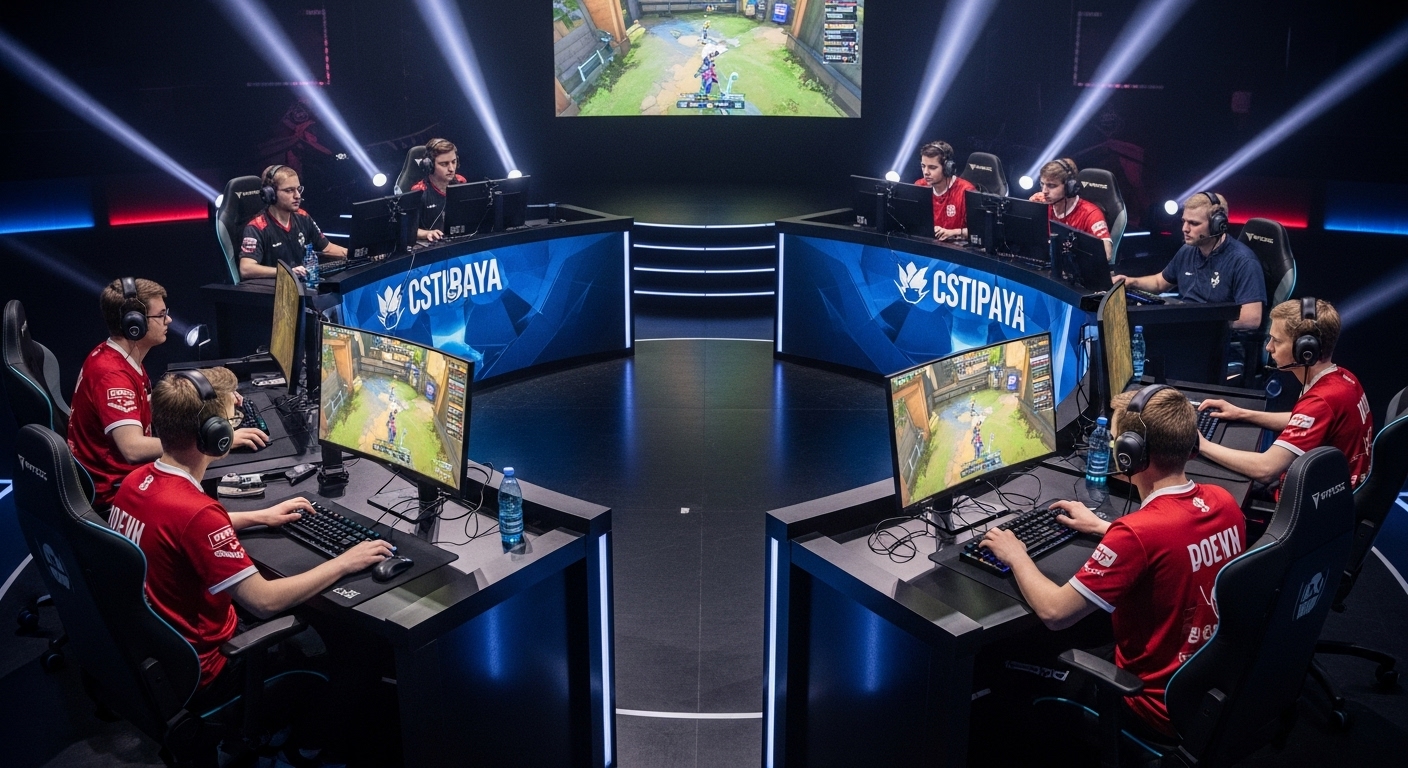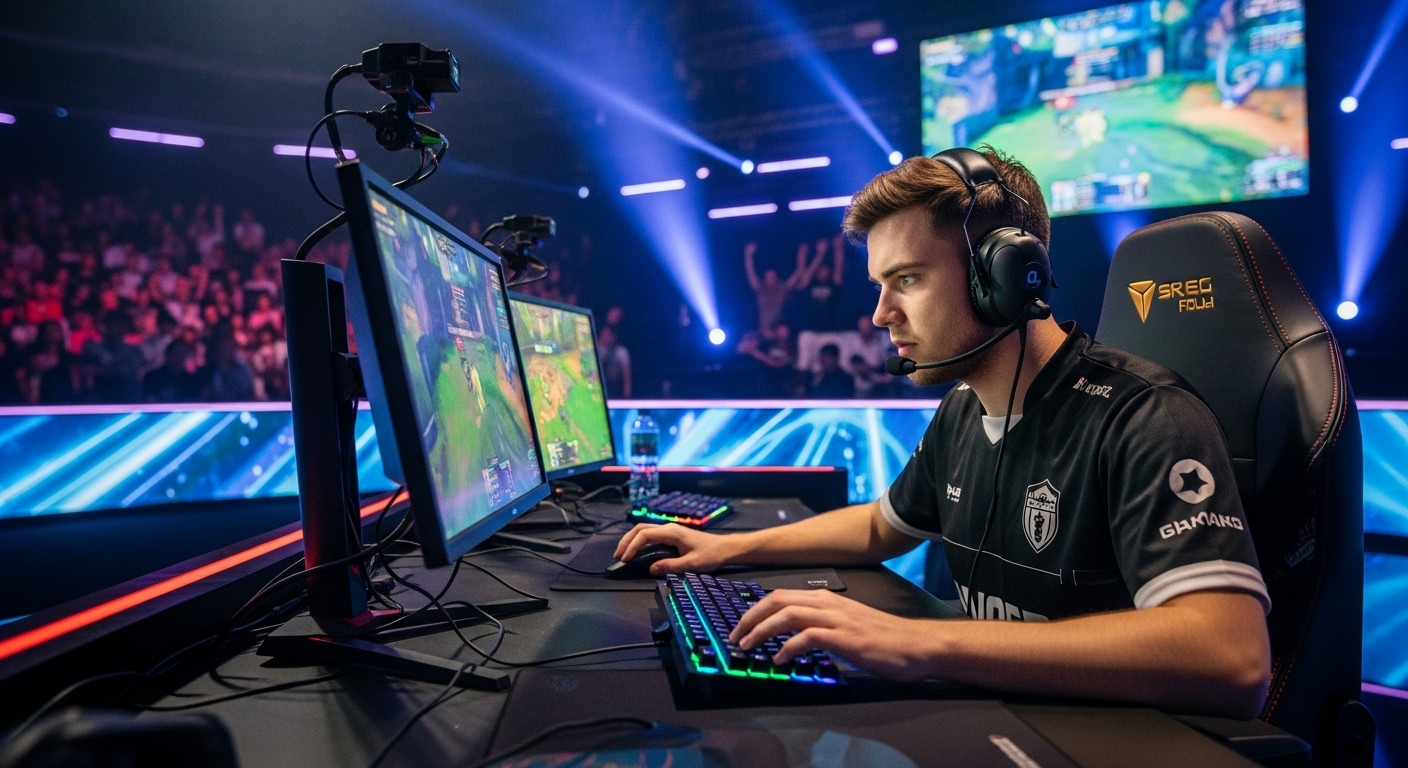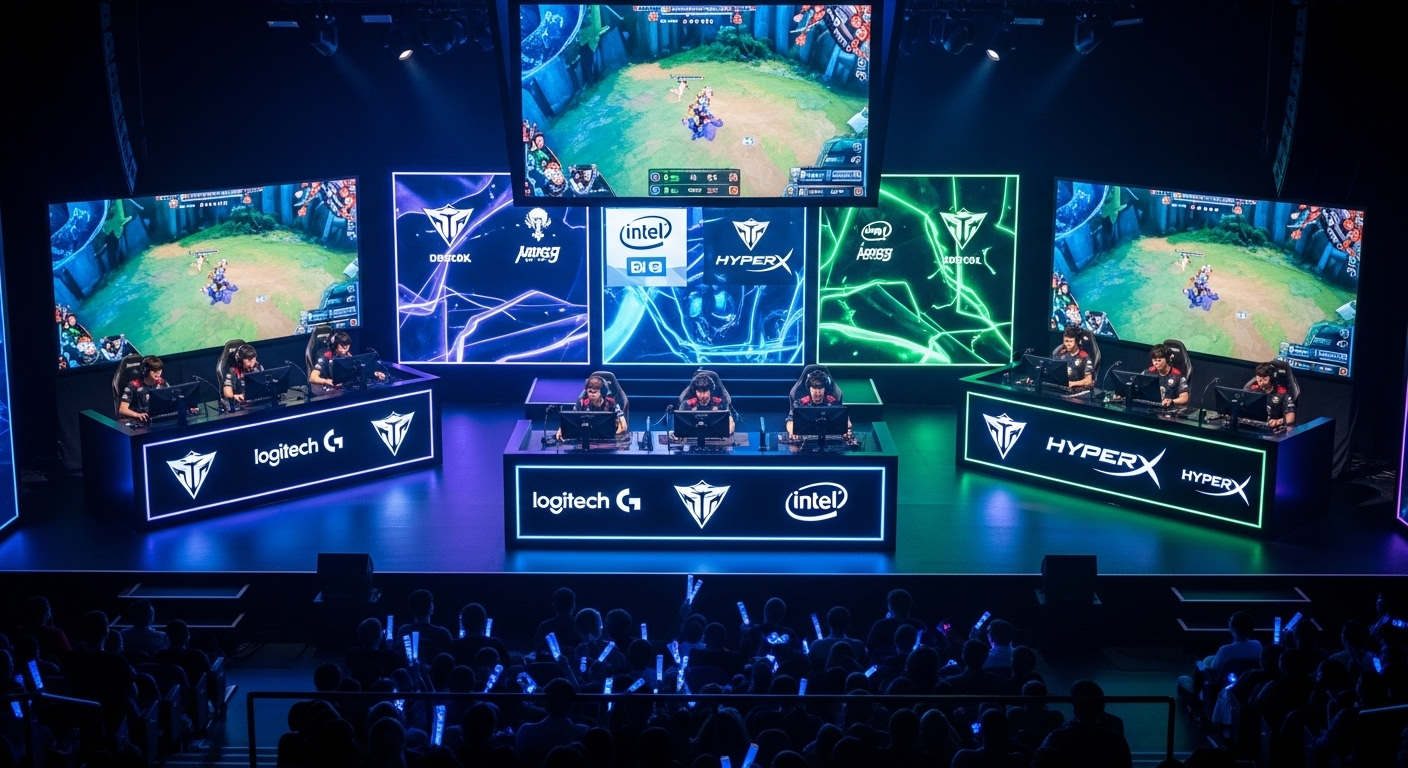Introduction
Esports, or competitive video gaming, has emerged as one of the most influential and rapidly growing entertainment industries in the modern era. What started as casual competitions among friends or small local tournaments has evolved into a billion-dollar global phenomenon with millions of viewers, multi-million-dollar prize pools, professional teams, and dedicated media coverage. The rise of esports is not merely a reflection of technological advancement; it represents a cultural shift, a new way of thinking about competition, and a redefinition of what it means to be an athlete in the digital age.
In this blog, we will explore the history of esports, the key games and tournaments that shaped the industry, the economics and careers within it, the cultural impact of gaming, the role of technology, and the challenges and opportunities that lie ahead. This comprehensive overview will provide insights into why esports is more than a trend—it is a defining feature of contemporary entertainment and digital culture.
The Early Days of Competitive Gaming
The roots of competitive gaming can be traced back to the early 1970s, when video games first became popular in arcades and on university campuses. One of the earliest recorded gaming competitions took place in 1972 at Stanford University, where participants competed in the game Spacewar for a one-year magazine subscription. While modest by today’s standards, this event demonstrated that games could be a source of structured competition and recognition.
During the 1980s, arcade games such as Pac-Man, Donkey Kong, and Space Invaders introduced leaderboards and high scores, fostering a sense of rivalry among players. Local tournaments became more common, creating communities centered around competition and skill mastery. As personal computers and home consoles became widespread in the 1990s, multiplayer games like Doom, Quake, and Warcraft allowed players to compete over local area networks and eventually the internet, setting the stage for professional esports.
The Rise of Professional Esports
The professionalization of esports began in the early 2000s with the emergence of organized leagues and international competitions. Titles like Counter-Strike, StarCraft, and Defense of the Ancients (DotA) became central to competitive gaming, particularly in South Korea, where StarCraft: Brood War gained national prominence. Players were treated as celebrities, televised matches attracted massive audiences, and corporate sponsorships began to support teams and tournaments.
Organizations such as Major League Gaming and the World Cyber Games provided platforms for players to demonstrate their skills on a global stage. Teams adopted structured training regimens, hired coaches, and implemented strategies that mirrored those in traditional sports. This professional approach demonstrated that esports required discipline, teamwork, and tactical intelligence, establishing the foundation for the modern competitive gaming ecosystem.
The Impact of Streaming Platforms
The rise of streaming platforms in the 2010s transformed esports from a niche activity into a mainstream entertainment phenomenon. Platforms like Twitch, YouTube Gaming, and Facebook Gaming allowed fans to watch live matches from anywhere in the world. This direct access created a deeper connection between players and audiences, turning competitive gamers into digital celebrities with large, loyal fan bases.
Streaming also democratized viewership, enabling millions to follow tournaments without attending in person. High-profile events such as the League of Legends World Championship, Dota 2’s The International, and Fortnite competitions attracted audiences comparable to major sporting events. This accessibility fueled the rapid growth of esports and solidified its place as a key component of digital entertainment.
Games That Shaped the Esports Industry
Several games have played critical roles in shaping the esports landscape. League of Legends established a structured competitive ecosystem with regional leagues and global tournaments, creating a pathway for aspiring players to achieve international recognition. Dota 2 set new financial benchmarks with its crowdfunded prize pools, culminating in The International, which offers millions in rewards. Counter-Strike: Global Offensive has maintained longevity as a competitive shooter, while Overwatch and Valorant have introduced team-based, tactical gameplay to new audiences.
Battle royale games like Fortnite and PlayerUnknown’s Battlegrounds expanded esports’ reach by attracting younger and more casual audiences. The diversity of titles within esports ensures that different skills, strategies, and playstyles are represented, appealing to a broad spectrum of players and viewers worldwide.
The Economics of Esports
Esports has evolved into a multi-billion-dollar industry supported by diverse revenue streams, including sponsorships, advertising, merchandise sales, ticket sales, and media rights. Corporations recognize the marketing potential of esports, particularly its ability to reach younger, tech-savvy audiences. Sponsors range from technology brands to energy drinks and lifestyle products, highlighting the commercial appeal of the industry.
Professional esports organizations operate similarly to traditional sports franchises. Teams recruit and train players, manage contracts, develop brand identities, and create merchandising opportunities. Iconic organizations such as Team Liquid, Fnatic, Cloud9, and T1 have expanded into content creation, digital media, and lifestyle branding, ensuring that their influence extends beyond competitive play and into broader cultural impact.
The Professional Esports Athlete
Professional esports players are highly disciplined and skilled individuals. They dedicate hours each day to refining their gameplay, analyzing strategies, and working with teammates to achieve synergy in competitive settings. In team-based games like League of Legends and Overwatch, communication, coordination, and decision-making are crucial to success, highlighting the importance of teamwork and strategy.
Mental toughness is equally critical. Players must manage stress, maintain focus during high-stakes matches, and adapt quickly to evolving game scenarios. Many teams employ sports psychologists and performance coaches to ensure players maintain their mental and emotional well-being. Physical health is also emphasized, with players encouraged to engage in exercise, maintain proper posture, and follow nutritional guidelines to sustain long hours of gameplay.
Esports in Education
The influence of esports has extended into education, with universities and high schools increasingly recognizing its value. Scholarships for competitive gaming are now offered in multiple countries, and schools are establishing esports programs and varsity teams. These initiatives provide students with opportunities to develop skills such as leadership, communication, teamwork, and critical thinking.
Beyond playing professionally, students can pursue careers in esports management, broadcasting, event planning, analytics, and content creation. The integration of esports into educational systems reflects its legitimacy and demonstrates that competitive gaming can contribute to both personal and professional development.
Cultural Impact of Esports
Esports has grown into a global cultural phenomenon. Major tournaments are more than competitions; they are entertainment spectacles with elaborate stage designs, live performances, and fan interaction. Stadiums hosting esports events rival those of traditional sports, and the energy from live audiences and online communities demonstrates the cultural significance of competitive gaming.
The influence of esports extends beyond games into fashion, music, and media. Collaborations between gaming companies and lifestyle brands have created highly sought-after apparel, and musical performances at tournaments further bridge the gap between gaming and mainstream culture. Esports has inspired art, documentaries, and online content, reinforcing its role as a transformative cultural force.
Technological Advancements Driving Esports
Technology has been central to the rise of esports. High-speed internet, advanced graphics, and powerful gaming hardware have enabled smooth, competitive gameplay. Cloud gaming and 5G networks are expanding access to esports, allowing players worldwide to compete at high levels without expensive equipment.
Emerging technologies like virtual reality and augmented reality promise immersive experiences for both players and spectators. Fans may soon engage with games in fully interactive environments, and players could compete in hybrid digital-physical formats. Artificial intelligence is also being leveraged to enhance coaching, analyze gameplay, and optimize tournament production, shaping the future of competitive gaming.
Challenges Facing the Esports Industry
Despite rapid growth, esports faces significant challenges. Player burnout remains a critical issue, as intense practice schedules, travel, and competition pressures can lead to mental and physical exhaustion. Many professional players retire in their early twenties, highlighting the need for sustainable career pathways and wellness support.
Regulation and standardization are also challenges. Different game publishers and tournament organizers have varying rules, resulting in inconsistencies in contracts, prize distribution, and competitive fairness. Ensuring transparency and uniformity will be essential for long-term stability.
Inclusivity is another ongoing concern. Female gamers and underrepresented groups face barriers in professional esports, and online toxicity continues to be a pervasive problem. Initiatives to promote diversity, safety, and accessibility are vital for creating an equitable and sustainable esports ecosystem.
Esports and Traditional Sports
The relationship between esports and traditional sports has become increasingly intertwined. Professional sports organizations have launched esports teams and competitions, bridging the gap between physical and digital athletics. The NBA 2K League, for example, allows players to represent real-world basketball franchises in competitive digital leagues.
Traditional athletes are also engaging with esports, investing in gaming organizations, streaming gameplay, and participating in tournaments. This crossover strengthens the legitimacy of esports and exposes traditional sports audiences to the competitive gaming culture, expanding its reach and influence.
The Pandemic and Esports Growth
The global pandemic accelerated the prominence of esports. While live traditional sports were disrupted, esports adapted seamlessly to online formats. Tournaments continued virtually, and viewership surged as people sought entertainment and social interaction during lockdowns.
This period highlighted the adaptability of esports as a digital-first industry. Hybrid models combining online and in-person events continue to thrive, ensuring accessibility and global participation. The pandemic demonstrated that esports could flourish even under unprecedented challenges, solidifying its place in the entertainment landscape.
The Global Community of Esports
Esports transcends borders, languages, and cultures. Players from around the world compete on equal footing, and fans connect through shared enthusiasm for games. International tournaments foster cultural exchange and global collaboration, strengthening the sense of community within esports.
Online forums, streaming chats, and social media groups allow fans to engage with each other and with professional players, building a network of shared experiences. This sense of belonging and global connection is a unique feature of esports that differentiates it from traditional sports.
The Future of Esports
The future of esports is bright, with technology, audience growth, and cultural relevance driving its continued evolution. Virtual reality, cloud gaming, artificial intelligence, and interactive streaming experiences will redefine how competitions are played and consumed. The possibility of esports inclusion in the Olympics or other global sporting events represents a milestone that could further validate competitive gaming as a legitimate athletic pursuit.
Esports will continue to influence media, entertainment, and culture, shaping the way future generations interact with technology and competition. Its growth demonstrates the power of digital communities, innovation, and human skill in shaping modern entertainment.
Conclusion
Esports has transformed from a niche hobby into a global industry that defines modern entertainment, culture, and technology. Professional players, international tournaments, streaming platforms, and fan communities illustrate that esports is more than a game—it is a cultural movement and a legitimate form of competition. It combines skill, strategy, creativity, and technology in ways that challenge traditional definitions of sport and entertainment.
The rise of esports highlights human innovation, resilience, and the desire for connection. From small local competitions to global tournaments, esports has created opportunities for players, audiences, and businesses alike. As the industry continues to grow, it will remain a defining feature of digital culture, showcasing the limitless potential of human ambition in a connected, digital world.




